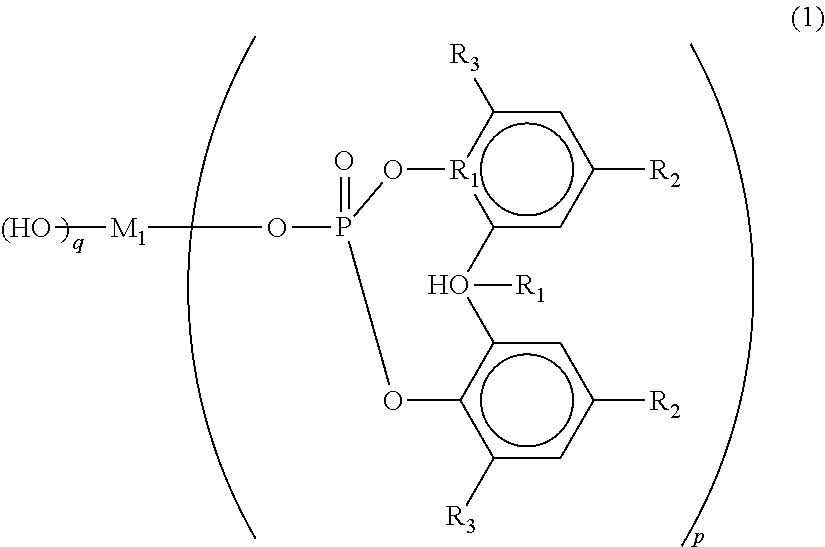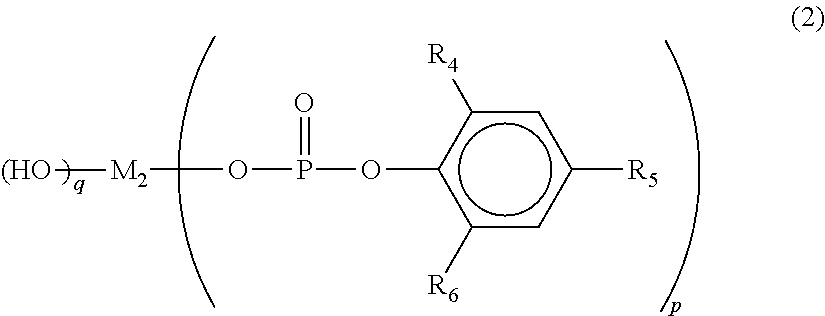Polylactic acid film
a technology of polylactic acid and film, applied in the field of polylactic acid film, can solve the problems of difficult to produce a transparent film from the stereocomplex, limited application, zooming in oil price, etc., and achieve excellent dimensional stability, high transparency, and excellent transparency
- Summary
- Abstract
- Description
- Claims
- Application Information
AI Technical Summary
Benefits of technology
Problems solved by technology
Method used
Image
Examples
reference example 1
Synthesis of Polylactic Acid by Melt Ring-Opening Polymerization of Lactide
[0290]After the inside of a vertical stirring tank (40 liters) equipped with a full-zone wing and having a vacuum pipe, nitrogen gas pipe, catalyst, L-lactide solution introduction pipe and alcohol initiator introduction pipe was substituted by nitrogen, 30 kg of L-lactide, 0.90 kg (0.030 mol / kg) of stearyl alcohol and 6.14 g (5.05×10−4 mole / 1 kg) of tin octylate were fed to the tank and heated at 150° C. under a nitrogen pressure of 106.4 kPa. When the content was dissolved, stirring was started and the inside temperature was further raised to 190° C. Since a reaction starts when the inside temperature exceeds 180° C., cooling was started to maintain the inside temperature at 185 to 190° C. to continue the reaction for 1 hour. Stirring was further continued to carry out the reaction at a nitrogen pressure of 106.4 kPa and an inside temperature of 200 to 210° C. for 1 hour and then stopped to add a phosphorus...
example 3
[0295]A polylactic acid film was produced in the same manner as in Example 2 except that 0.3 part by weight of Carbodilite LA-1 (of Nisshinbo Industries, Inc.) was mixed as a carboxyl group sealing agent in addition to the crystallization nucleating agent. The characteristic properties of the obtained polylactic acid film are shown in Table 1.
reference example 2
Production of Polylactic Acid (A3) by Double-Screw Kneader
[0296]The poly(L-lactic acid) resin and the poly(D-lactic acid) resin obtained in Reference Example 1 were mixed together in a weight ratio of 1 / 1, 100 parts by weight of the obtained mixture and 0.1 part by weight of a phosphoric acid ester metal salt were uniformly mixed together by means of a blender, the obtained mixture was dried at 120° C. for 5 hours and supplied into the first feed port of a double-screw kneader to be melt kneaded for a residence time of 2 minutes at a cylinder temperature of 230° C. while air was evacuated at a vent pressure of 13.3 Pa and extruded into a strand in a water tank, and the strand was cut into a chip by a chip cutter to obtain polylactic acid (A3).
PUM
| Property | Measurement | Unit |
|---|---|---|
| temperature | aaaaa | aaaaa |
| melting point | aaaaa | aaaaa |
| haze | aaaaa | aaaaa |
Abstract
Description
Claims
Application Information
 Login to View More
Login to View More - R&D
- Intellectual Property
- Life Sciences
- Materials
- Tech Scout
- Unparalleled Data Quality
- Higher Quality Content
- 60% Fewer Hallucinations
Browse by: Latest US Patents, China's latest patents, Technical Efficacy Thesaurus, Application Domain, Technology Topic, Popular Technical Reports.
© 2025 PatSnap. All rights reserved.Legal|Privacy policy|Modern Slavery Act Transparency Statement|Sitemap|About US| Contact US: help@patsnap.com



